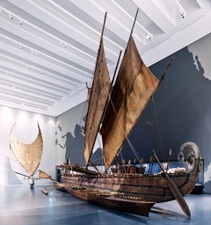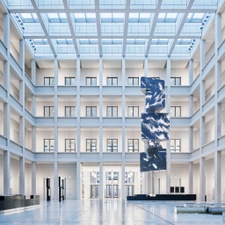Führung: Vergessene Befreiung
In the organizer's words:
The Second World War ended in Europe 80 years ago. The exhibition focuses on the experiences of forced laborers in Berlin for the first time. At the beginning of 1945, there were around 370,000 foreign civilian workers, prisoners of war and concentration camp inmates in the imperial capital of Berlin. Hunger, air raids and violence determined their everyday lives, while the city increasingly became a battlefield. After years of exploitation and dehumanization, they were finally liberated at the end of April 1945.
However, the end of the war brought new uncertainties for many of the liberated, so-called displaced persons. They often had to hold out in collection camps while their journey home was delayed. By the fall of 1945, most of them had disappeared from the Berlin cityscape - and soon from the memory of the Germans. Many were denied recognition as victims of National Socialism for a long time, both in Germany and in their home country.
This content has been machine translated.Location
Organizer | Miscellaneous















